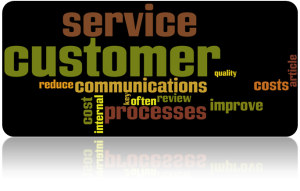 Quality, Price, Service – Select any 2.
Quality, Price, Service – Select any 2.
This is the sign that supposedly hangs (or hung) in dry cleaners across the country. The point is, you can’t have all 3, so figure out – essentially – what you DON’T want.
In the world of customer service, organizations often have a similar question – Do we want good customer service or low costs?
This is based on the assumption that you can’t have great customer service without increasing costs. The recent article Water operations review in GA county seeks cost savings, customer service improvements notes how one Georgia county is trying to do both.
The DeKalb County Department of Watershed Management (DWM) has hired a consulting firm to evaluate organizational efficiencies, but in doing so also improve customer service. There isn’t a great deal of detail in the article, but you can glean some of the strategy by what’s included in the article: “The partnership is also expected to improve customer service and reduce wait times for customers. A thorough review of the utility’s administration, planning, operations, maintenance and capital programs, customer service, and billing and collections will also occur.”
To improve customer service, one key is to view customer service as the composition of the employee attitudes and the service processes. More standardized, high-quality processes often are more efficient and result in less rework, fewer complaints to address, and higher productivity. This equates to lower cost.
The review of multiple departments suggests that they’re looking from a structure and process perspective to find inefficiencies in internal processes, internal communications, and communications about customer needs/issues. Streamlining internal processes often results in improved efficiency, and designing processes and customer communications to be better coordinated usually improves the customer experience.
It is definitely possible to reduce costs and improve customer service at the same time. The key is to look at processes and communications: Where is the poor quality? There’s a cost to poor quality. Where are the complaints? There’s a cost to address those. Where is there a lack of standardization? There’s financial benefit to moving to best practice. Where are the redundancies? There’s savings from eliminating waste.
Learn a little from these water works – focus on process and communications to reduce costs and increase customer satisfaction.
Did you like this post? Here are other Government-related posts:
- DMV Customer Service as a Leader…Really
- Customer Service of the Future…in Government
- Give Customer Service Some Definition
Visit our CSS Government Services page.





















